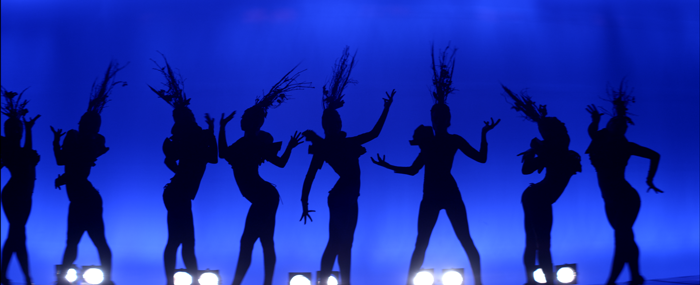After having graded a number of projects filmed on the Red One camera, I was keen to see what their new camera, the Epic, had to offer. I recently got the chance to work on a music clip for Australian artist Megan Washington called “Holy Moses.” Directed by Stephen Lance and posted at the newest post house in Brisbane ALT VFX, “Holy Moses” would prove to be the ideal workout for the Epic camera.
Stephen wanted a “classical movie look” so he and Callan Green, the DP, opted to shoot with LOMO anamorphic lenses that would produce tradition cinemascope pictures with beautiful lens flares. The Epic gave us the advantage of utilizing the full 5K sensor, giving us anamorphic files at a size of 3296 x 2700. So when looking at the raw file the image was squeezed. They also needed to shoot at high speed (200fps) and wanted to do some digital push ins only possible with high resolution files.

The first thing I needed to do was get the Epic r3d files into the DaVinci Resolve and do a best light grade. (A best light grade means match the shots and give the material a “look”, normally the session is attended). The first thing I did was change the camera metadata settings for Color Space to Redcolor 2 and Redgamma 2 for the gamma curve. I also adjusted the ISO and Color temperature on a couple of shots. The Resolve also changed the aspect ratio in the media pool from squeezed to Cinemascope giving us a letterboxed image when looking at my 16×9 grading monitor. After my initial color and contrast balance the pictures looked very similar to what the crew had seen on set. I added a few vignettes and did a very small amount of skin de-softening. Stephen wanted to spend a fair amount of time on the best light so that the pictures they saw during the edit would look as close as possible to his final vision,. If he could show the record company a finished cut with graded pictures it would help to ease the client approval process.
Once graded, I rendered the Epic timeline into DNxHD36 using source mode so the new color corrected files would have matching timecode and reel names to the original files. DNxHD36 was the requirement from the offline Avid editor.

Four days later we were back in the Resolve room grading the finished cut. The EDL produced by the Avid was used to conform the original Epic files. My best light grade was a great place to start, I could simply add or delete nodes from what I had done for the best light grade. Some of the color transitions between the shots needed to be smoothed out the individual scenes together, softening and tracking a number of windows to draw attention on to the artist. The final grade took 4 hours rendering to 1920 x 1080 DPX and 4K DPX for the VFX team.
Grading Epic or Red material is similar to grading film in that you need to get the best from your raw file, just like you needed to adjust and get the best from your negative on the telecine machine. I liked the EPIC from a colorist’s perspective and was very pleased with the finished pictures. The guys at ALT commented on the lack of noise and also loved the flexibility they had in working with such a large format.
Warren Eagles





